Puna kōrero
Learning from the parents of Māori and Pasifika students
Melanie Riwai-Couch, Ally Bull, and Jane Nicholls
Key points
•The disruption to school as we know it caused by COVID-19, and the government’s efforts to contain it, provide an opportunity to explore new ways of thinking about school and how to improve our education system. This means making it more equitable and better able to support education success for Māori and Pasifika students.
•Diverse voices provide valuable perspectives that are critical for understanding the complexity of the system. Hearing from parents of Māori and Pasifika students and other groups underserved by our current education system is particularly important.
•There is the potential to build on the experiences of school-led learning at home to strengthen the partnerships between schools and the communities they serve.
As a result of COVID-19 and the government’s measures to control it, Term 2, 2020 began with New Zealand school students learning from home rather than at school. This article reports on the results of a survey that explored the experiences of some parents of Māori and Pasifika students during their first week of this school-led learning at home (Riwai-Couch et al., 2020). It uses some direct content from the original survey report and summarises other parts.
The responses of parents of Māori and Pasifika students are considered separately in two puna kōrero, where we present the parents’ perspectives using direct quotes from the survey. We identify some patterns and themes arising from these voices and finally pose some questions for educators to think about. While the participant numbers were small, the timeliness of the survey is significant. We were able to present initial parent responses from two stakeholder groups whose children are underserved in the New Zealand education system; and did so in real time as the parents were grappling with the changes that were being implemented. Our hope is that, through this process, new possibilities might emerge that could make the school experience more positive for all learners, now and in the future.
He mihi
Kei ngā pakiaka o te whānau, kei ngā mātua huri noa i te motu, tēnā rā koutou katoa. E tika ana kia mihi ki a koutou katoa i whakaae ai kia whai wāhi ō koutou whakaaro ki tēnei pūrongo, i runga i te aroha nui ki ngā tamariki e ako ana ki te kāinga i tēnei wā. Mei kore ake ō koutou reo hei tautoko, hei ārahi, hei hāpai i tā mātou whakarite i tēnei pūrongo. Me mihi hoki ki ngā kaiako me ngā kura e whakapeto ngoi ana i tēnei wā kia ū tonu ngā tamariki katoa ki te ako mai i tawhiti, ahakoa ngā taumahatanga o te wā. Tēnei te hā o mihi ka rere ki a koutou, ki ngā pou o ako. Ko te manako ia ka whai hua tēnei pūrongo hei painga mō koutou, e eke tonu ai te ākonga ki ngā taumata o te mātauranga.
Nā mātou nei, ngā kairangahau COVID-19 and the country’s efforts to contain it highlight how uncertain and complex the world we live in really is. Dealing with such complexity can be overwhelming. A positive side of the disruption caused by COVID-19 is that this presents an opportunity to explore new ways of doing things. Owing to COVID-19 measures educators were tasked with providing resources and support to enable students to continue school learning in their own homes. A great deal of effort and resource was put into managing this situation and the very real challenges faced by both families and educators. Perhaps, the biggest of these challenges was finding ways to minimise the potential of the situation to exacerbate existing inequities in the education system.
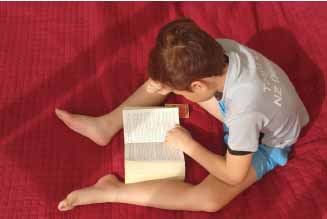
Stemming from a professional curiosity, Riwai-Couch developed a survey which sought the views of parents of Māori and Pasifika students on their experiences of the first week of school-led learning at home. The survey was shared through Facebook and in 2 days 134 parents responded. These parents represented at least 105 primary and 79 secondary students from throughout New Zealand in English- and Māori-medium settings. In the survey parents were asked about the benefits and challenges they had experienced during the first week of school-led learning at home. They were also asked how satisfied they were overall with the programmes that had been offered and the extent to which these programmes affirmed their identity, language, and culture. Suggestions for improvements were also sought.

This was not a formal research project, but more like a “safe-to-fail probe”—a small investigation in a complex system that is designed to allow new possibilities to become more visible (Snowden, 2007). The intent of the survey was to seize the opportunity afforded by the current disruption to work more closely with whānau to rethink how public education can best be provided to meet the needs and aspirations of all New Zealanders. It provided a unique opportunity to explore what more equal home–school partnerships might look like. Our thinking was informed both by the voices of the participants as well as the existing research literature on parental involvement in education and inequities in the New Zealand education system.
The research literature is unequivocal in showing that parental involvement in education makes a significant difference to educational achievement (see for example, Biddulph et al., 2003; Bull et al., 2008; Ministry of Education, 2008a; Robinson, Hohepa & Lloyd, 2009). However, within the literature there is a range of meanings about what constitutes parental involvement. If these meanings are spread along a continuum, at one end parental involvement would involve schools informing parents about educational issues, and at the other end parents/ whānau and the wider community would be making decisions with schools. Research suggests that most New Zealand schools operate nearer the “inform” end of the continuum (Bull, 2010). If we are serious about students becoming secure and confident in their language, culture, and identity then it will be essential to move towards more collaborative relationships. The alternative environment and arrangements during COVID-19 provide an opportunity for New Zealand educators to learn about the “funds of knowledge” (González, Moll, & Amanti, 2005) in Māori and Pasifika homes–and to work towards more equitable outcomes for all.
Presentation of findings in puna kōrero
This article presents the views of two specific groups, parents of Māori students and parents of Pasifika students. These views are presented as puna kōrero (Riwai-Couch, 2015). Puna kōrero is a broadly qualitative approach. Puna translates to mean a pool of water and kōrero as a verb means to talk and communicate, or as a noun is a story or narrative. A puna, as a living thing, is ever changing and is a source of wellbeing for its community. Puna nurture life and are therefore full of parent potential, but are also vulnerable to negative effects that require mitigation. The benefits of puna are often unknown, hidden, or unappreciated in a wider context. The puna kōrero metaphor implies context and connection with people and place, including a spiritual connection with temporal and cultural applications.
Included in this article and the parent report are photographs provided by parents (and used with permission) of Māori and Pasifika students engaged in school-led learning at home. These provide an additional insight into the experiences of these students during this unique period.
The responses from parents of Māori students (102) and parents of Pasifika students (32) were analysed separately in their puna kōrero. The comments for each group were categorised into themes—and, in some cases, subthemes. Here we present the puna kōrero organised into themes and subthemes using direct quotes from the parents as they shared them with us.
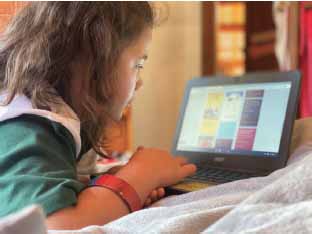
The analysis and reporting were undertaken by a research team from Evaluation Associates and University of Canterbury. The team consists of researchers with expertise in Māori education, Pasifika education, special education needs, and responding to the challenges from the Christchurch earthquakes.
Puna kōrero 1. Perspectives of parents of Māori students
Benefits identified by parents of Māori students
There were 100 responses by parents of Māori students detailing the benefits of school-led learning at home. The responses were grouped into four themes.
1.Mana motuhake o te whānau: Whānau decision making
A key benefit identified by parents of Māori students was the empowerment of their whānau as decision makers. This featured in three different ways: deciding what is important; deciding what is happening and when; and leading learning. Learning at home felt like a reclaiming of space and provided parents with confidence to have a greater say about what was important for their children’s education.
We have returned to a natural rhythm aligned more with the taiao. Time has given us more patience and enjoyment in everything we do. Less TV more doing ... exploring, independence, responsibility etc. self-driven learning i.e. enjoyment of reading about what they have experienced. (Parent)
I can put more of my own teaching and parenting philosophy into the day. Flexibility around time starting and following their lead. No commute to and from school! (Parent)
In the interest of brevity, while still honouring our commitment to the participants to have their unique voices heard, we have foregrounded quotes for the remaining three themes.
2.Te tamaiti me te ako: Understanding the child as a learner and their learning
Spending more time with them and getting more familiar with their style of learning. What their challenges are and what they excel in. (Parent)
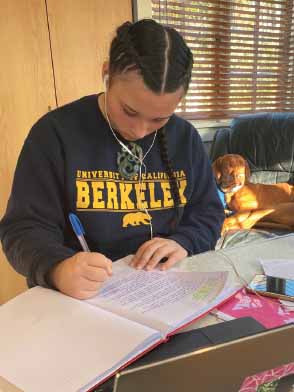
3.Te kāinga hei wāhi haumaru: Learning in a safe home environment
I like that they can do it in the comforts and warmth of home, and they are safe. It’s also nice to get involved but that can also face challenges. (Parent)
4.Te mahi a ngā kura: Schools’ flexible contributions to the experience.
Neither school has pressed the issue—encouraged the learning, but always stated health and well-being of students is paramount. (Parent)
Teachers have all made contact with me and have been supportive and realistic. I think it’s actually quite good under the circumstances. (Parent)
Concerns identified by parents of Māori students
There were 100 responses by parents of Māori learners detailing their concerns about school-led learning at home. The responses were grouped into three themes.
1.Te ako me ngā hononga: Learning and connection
Some parents worried that they were struggling to get children to engage, and/or that the lack of connections and social interaction within a small bubble might limit potential for learning.
That my children are too young and get distracted easily. I get stressed trying to work with them and feel they are not getting the best they can from this. (Parent)
2.Te aupēhi i ngā mātua: Demands on parents
Many parents noted that they were juggling priorities, with some feeling like they were struggling to lead learning or support wellbeing for all the whānau.
That the work is not consistent, both parents are essential workers so it depends on the day as to what we can do. (Parent)
Trying to split my time and attention on one bilingual and two kura kaupapa children at different levels is something I’m struggling with. (Parent)
Just not having another Māori speaker in the whare to accommodate my children as I’m a kaiako and have been doing class/Zoom with my students. (Parent)
Ngā kawatau o te kura: School expectations and design
Some parents noted difficulties with meeting study requirements, sometimes related to issues of equity and access to adequate technology. Some also worried about their own capacities as parents to understand school assignments and best support their tamariki.
Am I good enough? (Parent)
Remote learning from home is challenging with the various apps being used that are not compatible with their online classrooms. Seesaw etc. Time has been used searching and downloading apps that are suitable, causing anxiety for ākonga. (Parent)
Suggested improvements
Fifty-eight parents of Māori students provided suggestions for improvements. All related to things that kura and schools could potentially control. In summary, these were as follows.
1.Ngā taumaha ki te whānau: Greater recognition from schools of the multiple demands on whānau with greater acknowlegement that parents can’t always be available to supervise learning or the productive use of devices.
2.Kia kaha ake te hono atu ki ngā kaiako: Allow for students to have more online contact with their teachers, such as to ask questions that parents can’t help with, and increase the clarity of communications from schools to parents.
3.Kia nui ake te arataki me to tautoko: Provide more guidance and support to parents as well as students, especially through face-to-face online interactions and by setting up support networks.
4.Kia whai wāhi te katoa: Ensure greater equity and access to a variety of devices, apps, and other technical solutions (in both te reo Māori and English) so that those families with lesser resources or in Māori-medium education don’t miss out.
Puna kōrero 2. Perspectives of parents of Pasifika students
Benefits identified by parents of Pasifika students
There were thirty-two responses by parents of Pasifika students detailing the benefits of school-led learning at home. Overall their responses suggest that there are rich opportunities for Pasifika parents to use a cultural lens to facilitate learning, but schools need to consider this right from the design stage to enable parental input and freedom to shape and guide the learning.
The responses were grouped into four themes.
1.Fa’ataua le a’oa’oga ole tamaiti’iti
A benefit to learning from home was parents and other family members knowing their children as learners, while lockdown provided more time and opportunities for that connection.
Including her grandparents in play. Lots of cooking and gardening with Gran. Seeing her be so imaginative with her use of household objects in play and recognising dramatic behavior as creativity. Also seeing how she responds and talking about coping mechanisms. (Parent)
Seeing where they are at so I can be more involved, supportive and in-tune with their learning, their challenges and their interests. (Parent)
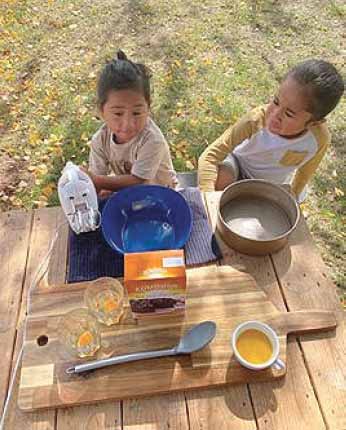
2.Fa’atauaina o filifiliga a’oa’o matua—parents making decisions about the learning
Comments about benefits related to being able to make their own decisions, and to make the most of a curriculum that can be tailored to their children.
It is quiet, the children can focus on their learning and exercise some agency around what they do and when. (Parent)
I can schedule classes as I like, concentrating them on my children’s’ weaknesses or strengths. I teach them budgeting, cooking, changing a car tyre, servicing a car, exercising, reading, spelling, math, piano, singing, and program structure. (Parent)
3.O le si’osi’omaga o le aiga—the home environment
The home is a sacred space for many Pasifika families, and parents appreciated their children being in a safe and peaceful at home environment. Learning from home brought cultural and spiritual benefits.
My son[s] have said it’s easier to learn in peace and quiet at home than to learn in the classroom when it’s noisy.
Home environment is great—comfortable, culturally/spiritually responsive/supportive. With good structure in place and routines the children seem to enjoy their learning. There is a good balance there that they enjoy [and they are] not bombarded with too many guidelines. They seem to listen well as they are familiar with the tone of our voices at home.
4.O le aoga—the school
Parents were grateful for the provision of resources and support.
I’m really impressed at how quickly the schools have managed to get work together for the kids. (Parent)
Concerns identified by parents of Pasifika students
There were thirty-two responses by parents of Pasifika students detailing the concerns about school-led learning at home. The responses were grouped into three themes.
1.Manaoga o tamaiti—concerns for children as learners
Parents were concerned about children’s of social interaction away from school and the distractions they faced with study at home. Some mentioned the risk that older children might not achieve qualifications.
The distractions if the learning opportunities are not engaging or personalised. My kids will end up talking with their friends in the chat features or on their phones. (Parent)
Just how my two bigger ones in Yr 11 are going to get on with their NCEAs. (Parent)
2.Fa’atauaina ole lagolago a matua i aoga ale fanau—parents stressed about supporting their children’s learning
Comments noted a level of stress about having the subject knowledge to support learning. There was also stress about having the time, energy, and emotional capacity to support learning.
That I’m not paying enough attention (I have a 2 mos old) that she has 3 adults all telling her what she is doing wrong. That she sees my frustration and takes it personally. She keeps referring to herself as stupid when she’s being corrected and I hope that narrative hasn’t come from me. (Parent)
I get stressed trying to work with them and feel they are not getting the best they can from this. (Parent)
3.Fesiligia aoga ma a latou sini fa’amoemoe mo fanau fa’atasi ai ma auala a’oa’o—concerns about school expectations and the learning design
Some raised concerns about schools not providing: clear guidance about expectations, an adequate curriculum, and/or equitable access to learning.
A lot of tasks given but not much contact to talk over how to do them. (Parent)
Made me reflect that almost zero content from primary school was culturally contextualised. A lot of the literacy content is very Americanised. The only Samoan content I have seen/heard is talofa lava from the principal’s greeting and the books I got from my friends at the Pasefika Teacher’s Network but that wasn’t through the school. (Parent)
I don’t think that my daughter’s (who is 10 years old) TV learning program is very good. It’s more for younger kids. So I pretty much find things for her to do. I think it could be organised better for the different younger ages. (Parent)
Suggested improvements
Thirty-two responses by parents of Pasifika students identified improvements that could be made within the first week of school-led learning at home. There were two main themes for improvement suggestions: tuluga fa’aleleia i aoga—school-related improvements; and tulaga fa’aleleia i aiga—home-related improvement.
They suggested that schools could improve access to technology and resources, including when printers were not available. They asked for more support—even training—to facilitate learning as the school wants it to happen, with improved communication about expectations and learning design.
Some also suggested that they wished it to be calmer and more peaceful at home, perhaps with quiet spaces to minimise distraction.
Kupu whakatepe / Upu fa’ai’u / Final comments
Many of the responses received indicated there were positive aspects of school-led learning at home. There also seemed to be some common tensions. One of these tensions was between enjoying the freedom provided by the current situation and anxiety about children falling behind. It seemed some parents were enjoying the freedom to expand what is learnt along with the flexibility of how and when learning happens, but some were worried about how children would adapt back to the structures, routines, and expectations of school including if children will have fallen behind with the curriculum.
There also seemed to be a tension between what some schools were expecting and what is realistically manageable. This was especially an issue when parents were working from home, there were children of different ages in the home all working on different programmes, when there were limitations of physical space or internet accessibility, or when parents doubted their own ability to support learning. Another tension noted was that while school-led learning at home potentially allowed relationships within whānau to be strengthened there were also concerns about children missing out on their relationships with friends.
An important question now is how we might use what has emerged from this disruptive situation to improve the educational experience of all young people, rather than simply reverting to the status quo, now that students are going back to school.
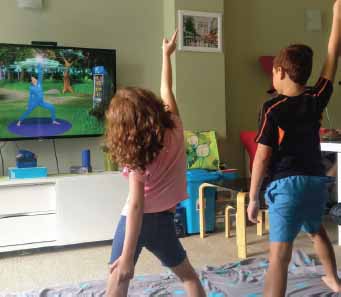
The notion that learning is a linear process with predictable rates of progression was noticeable in some of the responses gathered. In the context of school-led learning at home it seemed to be causing anxiety for some parents. There were concerns that children were falling behind, and/or that the parents felt inadequate to help. Another way of thinking about progress, though, is to consider a child’s ability to use what they know in a range of different contexts. This “expanded view” of learning is promoted in The New Zealand Curriculum (2007), through the principles, key competencies, values, and vision, and in Te Marautanga o Aotearoa (2008b), and Te Aho Matua o Ngā Kura Kaupapa Māori (1994). This view values students’ experiences that happen outside school as well as those that occur in school.
•What does, or could, your school do to promote an “expanded view” of learning?
•How might such an approach capitalise on the opportunities for intergenerational learning that were valued in some of the responses?
Many parents of Māori and Pasifika students commented in the survey that they valued the insights school-led learning at home was providing into students’ learning and progress. This raised questions for us about the strength and nature of existing relationships between schools and whānau. If strong, reciprocal relationships existed between the school and home it seemed likely to us that parents would already have a good sense of their children as learners. Given the positive links between whānau engagement with schools and educational achievement (Bull, Brooking & Campbell, 2008), this could be a fruitful area to explore further.
What is the nature of the existing relationships between your school and the communities it serves? Is the communication between school and home mainly one-way or is it multidirectional?
•What evidence do you have about the nature of the existing relationships between your school and its communities? Is your current emphasis on informing or consulting with parents or have you developed a more collaborative partnership where parents can feed into curriculum, teaching, and learning?
How effective are your learning partnerships with Māori and Pasifika families in your school/ kura? How do you know?
•What does educational success look like for your Māori and Pasifika communities? How do you know?
Throughout this project we have purposefully used the term school-led learning at home rather than distance education or remote learning. For us, the use of the term school-led learning at home was meant to signal our belief that the learning schools provide is only one part of the rich learning that occurs across the boundaries between homes and schools.
•To what extent has the experience of providing school-led learning at home allowed teachers to learn more about the “funds of knowledge” in the homes of Māori and Pasifika students?
•How might existing school/class programmes be adapted to facilitate more connections between home and school learning?
•How might such learning be used in your context to work towards more equitable outcomes for all?
It is our hope that the extraordinary times we have all been experiencing and the questions raised here might act as a catalyst for change so that collectively we can work towards a fairer and more equitable education system that better meets the needs of all learners in a rapidly changing world.
Acknowledgements
This article is a summarised version of the report by Riwai-Couch et al. (2020). The full report can be accessed from:
http://www.evaluate.co.nz/key-readings/school-led-learning-voices-of-parents-of-maori-and-pasifika-students/.
This article arises from the collective work of the project team. The team consists of Dr Melanie Riwai-Couch (Rangitāne o Wairau, Ngāti Kuia), Ally Bull, Brenda Ellis, Kerry Hall, Jane Nicholls, and Richard Watkinson (all from Evaluation Associates) and Leali’ie’e Tufulasi Taleni who is the Kaiārahi Pasifika at the University of Canterbury and is based in the College of Education Health and Human Development.
We are grateful to the parents who trusted us with their perspectives, and to the educators who find the time and energy to think about new possibilities in these times of disruption and uncertainty.
Ngā tohutoro / Upu fa’amaumau / References
Biddulph, F., Biddulph, J., & Biddulph, C. (2003). The complexity of community and family influences on children’s achievement in New Zealand: Best evidence synthesis. Ministry of Education.
Bull, A., Brooking, K., & Campbell, R. (2008). Successful home–school partnerships: Report to the Ministry of Education. NZCER.
Bull, A. (2010). Community engagement and the New Zealand curriculum. NZCER.
González, N., Moll, L. C., & Amanti, C. (Eds.). (2005). Funds of knowledge: Theorizing practices in households, communities, and classrooms. Lawrence Erlbaum Associates Publishers.
Leadbeater, C. (2011). Rethinking innovation in education. Discussion paper prepared for DEECD, Victoria. Ministry of Education. (2007).
Ministry of Education. (2007). The New Zealand curriculum. Learning Media.
Ministry of Education. (2008a). Ka hikitia—Managing for success 2008–2012: The Māori education strategy. Author.
Ministry of Education. (2008b). Te marautanga o Aotearoa. Author.
Ministry of Education. (1994). Te aho matua o ngā kura kaupapa Māori. Author.
Riwai-Couch, M. (2015). Puna kōrero: Iwi and schools working together to support Māori student success. [Doctoral thesis, University of Canterbury]. http://hdl.handle.net/10092/10250
Riwai-Couch, M., Bull, A., Ellis, B., Hall, K., Nicholls, J., Taleni, T., Watkinson, R. (2020). School-led learning at home: Voices of the parents of Māori and Pasifika students. Evaluation Associates. http://www.evaluate.co.nz/key-readings/school-led-learning-voices-of-parents-of-maori-and-pasifika-students/
Robinson, V. M. J., Hohepa, M., & Lloyd, C. (2009). School leadership and student outcomes: Identifying what works and why, Best evidence synthesis. Ministry of Education.
Snowden, D. (2007). Safe to fail probes. https://cognitive-edge.com/blog/safe-fail-probes
Dr Melanie Riwai-Couch (Rangitāne o Wairau, Ngāti Kuia) is the kaihautū Māori and an education consultant for Evaluation Associates. For her PhD Melanie investigated iwi–school partnerships and how they can support Māori student achievement.
Email: M.Riwai-Couch@evaluate.co.nz
Ally Bull is a consultant and researcher for Evaluation Associates. Her research interests include community engagement in education and future focused education.
Jane Nicholls leads Evaluation Associates’ Publications Portfolio. Jane’s master’s thesis examined the use of digital storytelling for whole school professional learning and growth.